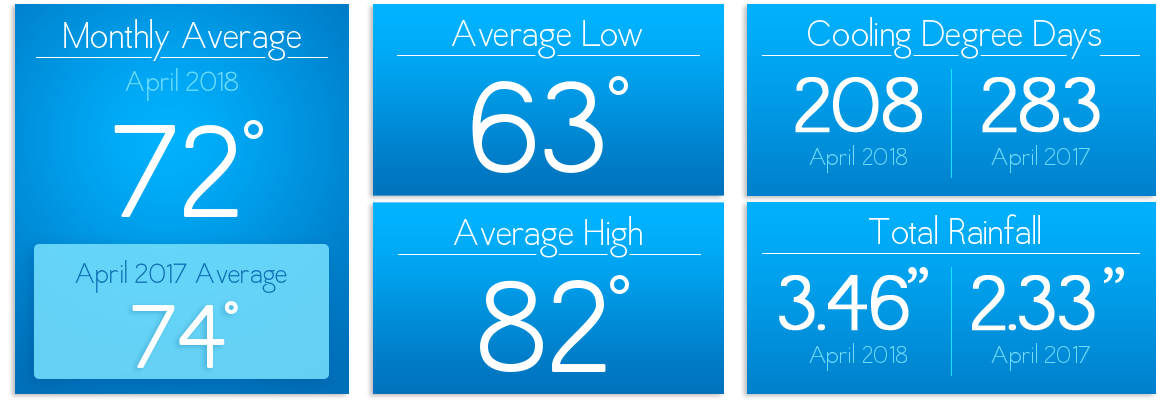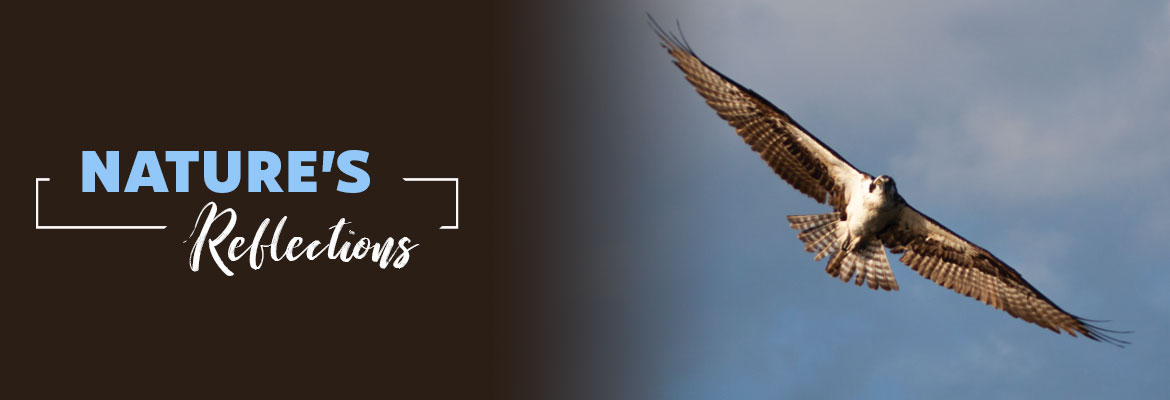Sunshine State Stats, April 2018
April 2018 was slightly cooler on average than April 2017. The average temperature was 72°, while April of 2017 had an average temperature of 74°. Rainfall for April of 2018 was 3.46 inches compared to last April at 2.33 inches.

There were 208 cooling degree days and 6 heating degree days for April 2018, while last year there were 283 cooling degree days with 4 heating degree days. The Degree Days are based on how much warmer or cooler the average temperature at a particular location is than 65°F. In other words, if the average temperature is 60° degrees outside on a particular day, there are 5 Heating Degree Days for that day in that location.
May 2018 is forecast to be somewhat the same as last year with average temperatures in the 80s and 90s. Rainfall is forecast to be heavier than normal compared to 2017. Much hotter weather is coming our way.
Keep in mind that 78°- 80° is the national standard for thermostat settings during the summer months. Per ENERGY STAR, investing in a programmable thermostat can save you about $180 annually. Wifi models that you can program from your computer or smartphone start at under $100 nowadays. Or you could win a wifi programmable thermostat in our May Facebook incentive. Read this month’s SECO News for details.
If you want to check historical usage, log into SmartHub to view past bills and charts. If your usage is high, SECO offers several energy-efficiency tools to help you identify energy wasters. Take the Home Energy Assessment to receive a detailed email tailored to your home’s features and lifestyle. The energy-saving advice will provide low-cost ways to decrease your usage – and your electric bill.
To easily calculate how much energy your appliances, lighting, electronic devices, and other energy-using items in your home consume, use the Energy Estimator. If you want a member of our Energy Services team to come to your home to perform a free energy audit, contact us today to book an appointment.




